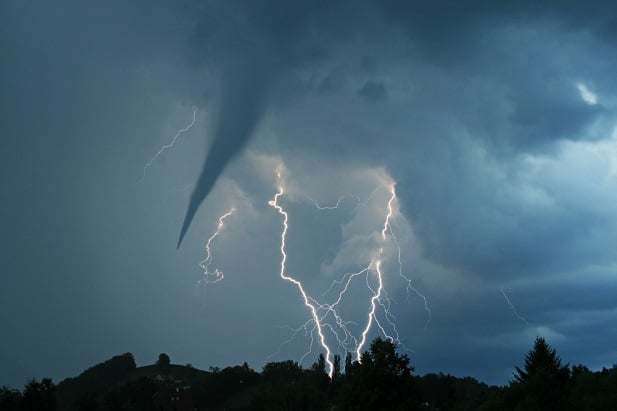 About one-third of the U.S.'s $18 trillion gross national product is generated by industries vulnerable to changes in the weather. There were 14 weather events that caused at least $1 billion in damages in the U.S. last year, according to the National Centers for Environmental Information. (Photo: Shutterstock)
About one-third of the U.S.'s $18 trillion gross national product is generated by industries vulnerable to changes in the weather. There were 14 weather events that caused at least $1 billion in damages in the U.S. last year, according to the National Centers for Environmental Information. (Photo: Shutterstock)
(Bloomberg) –Every uptick in wind speed along the Gulf of Mexico shoreline is of enormous interest to Mike Eilts.
Eilts, senior vice president for weather at DTN, a Minnesota-based analytics firm, knows that an unexpected cold front in Louisiana, nudged southward by a jet stream unsettled by global warming, can push rising winds into the Gulf, putting dozens of floating oil rigs at risk.
The rigs can withstand hurricane-force winds of 80 miles per hour if they have time to turn to face the tempest. But if they're hit from the side, their pipes can be severed with just a bit more than a 35-mile per hour breeze. DTN is paid to make sure that doesn't happen.
Continue Reading for Free
Register and gain access to:
- Breaking benefits news and analysis, on-site and via our newsletters and custom alerts
- Educational webcasts, white papers, and ebooks from industry thought leaders
- Critical converage of the property casualty insurance and financial advisory markets on our other ALM sites, PropertyCasualty360 and ThinkAdvisor
Already have an account? Sign In Now
© 2024 ALM Global, LLC, All Rights Reserved. Request academic re-use from www.copyright.com. All other uses, submit a request to [email protected]. For more information visit Asset & Logo Licensing.








